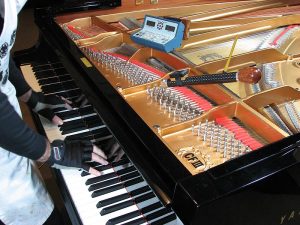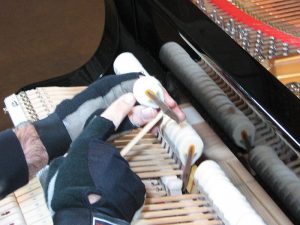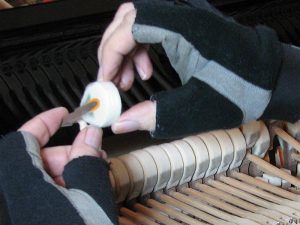A Piano’s Unique Sound
 Each piano has a particular sound or tone that makes it unique. Some pianos sound “warm”, others “bright”. The intrinsic sound of a piano is set by the piano’s design, but it changes over time.
Each piano has a particular sound or tone that makes it unique. Some pianos sound “warm”, others “bright”. The intrinsic sound of a piano is set by the piano’s design, but it changes over time.
As the piano is played, the felts on the hammers become compacted or string-cut giving the piano a harsh sound and the piano’s tone becomes unpleasant.
Regulation
The first step in adjusting the tone of a piano is to do a regulation of the mechanical systems. Among other things, regulation will make sure the hammers are aligned with the strings.
After the mechanical parts are in proper order, all the registers of the keyboard will have a similar touch. Soft passages can be played softly, and loud passages loudly. After the piano is regulated, then it can be voiced.
Voicing
 During voicing, the felts on the hammers are addressed. Moderately worn or string-cut felts can be reshaped with sandpaper.
During voicing, the felts on the hammers are addressed. Moderately worn or string-cut felts can be reshaped with sandpaper.
If the sound is too loud or bright, or the sound dies too quickly, then the felts may be too hard and compacted. The piano technician can soften them.
If the sound is too weak or mellow, the felts may be too soft and need hardening.
 When the overall sound is correct, each note is individually voiced to make each one sound like its neighbors.
When the overall sound is correct, each note is individually voiced to make each one sound like its neighbors.
A piano that is properly tuned, regulated, and voiced is not only a joy to play, it also is a better instrument for refining one’s playing technique.
For more information about voicing, see the Voicing (Tone Regulation) Technical Bulletin at the Piano Technician’s Guild web site.